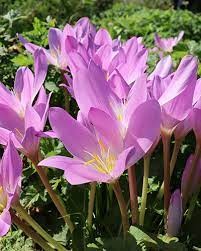
Colchicum Autumnale in Homeopathy: Harnessing the Healing Power of the Autumn Crocus
Introduction
Colchicum autumnale, derived from the autumn crocus or meadow saffron, is a unique and fascinating option.
Historical Context
Colchicum autumnale, also known as the autumn crocus or meadow saffron, is a flowering plant native to Europe and North Africa. Traditionally, this plant has been used as a poisonous herb, particularly in ancient Greek and Roman medicine. In homeopathy, however, Colchicum autumnale is prepared using highly diluted forms of the plant material to harness its therapeutic potential. The practice of using this substance in homeopathy gained prominence in the 19th century.
Properties of Colchicum autumnale
Colchicum autumnale possesses a range of properties and indications within the realm of homeopathy, including:
Gastrointestinal Disorders: This remedy is often used to treat severe nausea and vomiting, especially when triggered by the smell of food. It can also address diarrhea, abdominal pain, and a feeling of emptiness or hollowness in the stomach.
Joint Pains: Colchicum autumnale is employed in cases of gout or other forms of arthritis with symptoms such as intense, shifting joint pains that are aggravated by touch and movement but improved with warmth.
Respiratory Issues: It may be used for individuals with bronchitis or pneumonia, especially when the cough is deep, dry, and accompanied by a sensation of soreness in the chest.
Heart and Circulatory Disorders: Colchicum autumnale can be prescribed for certain cardiac conditions marked by irregular or slow heartbeats, often with a feeling of constriction in the chest.
Skin Conditions: In some instances, it may be indicated for skin complaints with burning sensations or bluish discoloration.
Choosing Colchicum autumnale
In homeopathic practice, the selection of an appropriate remedy depends on the patient's specific symptoms and constitution. Colchicum autumnale is most suitable for those who exhibit the characteristic symptoms associated with it. Homeopathic practitioners consider not only the physical symptoms but also the patient's emotional and mental state when prescribing this remedy.
Safety and Precautions
Homeopathic remedies, including Colchicum autumnale, are generally considered safe when used as directed. The extreme dilution process renders them unlikely to cause side effects or toxicity. However, it is advisable to consult a qualified homeopathic practitioner for proper assessment and dosage recommendations.
Conclusion
Colchicum autumnale, derived from the toxic autumn crocus, exemplifies the intriguing nature of homeopathy. Despite its natural toxicity, this remedy, when prepared and administered according to the principles of homeopathy, offers therapeutic benefits for a variety of health issues. Whether used for gastrointestinal disorders, joint pains, respiratory issues, or other conditions, Colchicum autumnale showcases the profound potential of natural substances in homeopathic healing. It reminds us that, in the world of homeopathy, even the most poisonous plants can be transformed into remedies that promote health and well-being when used with precision and care.
Dr Mahima Rastogi
Homoeopath